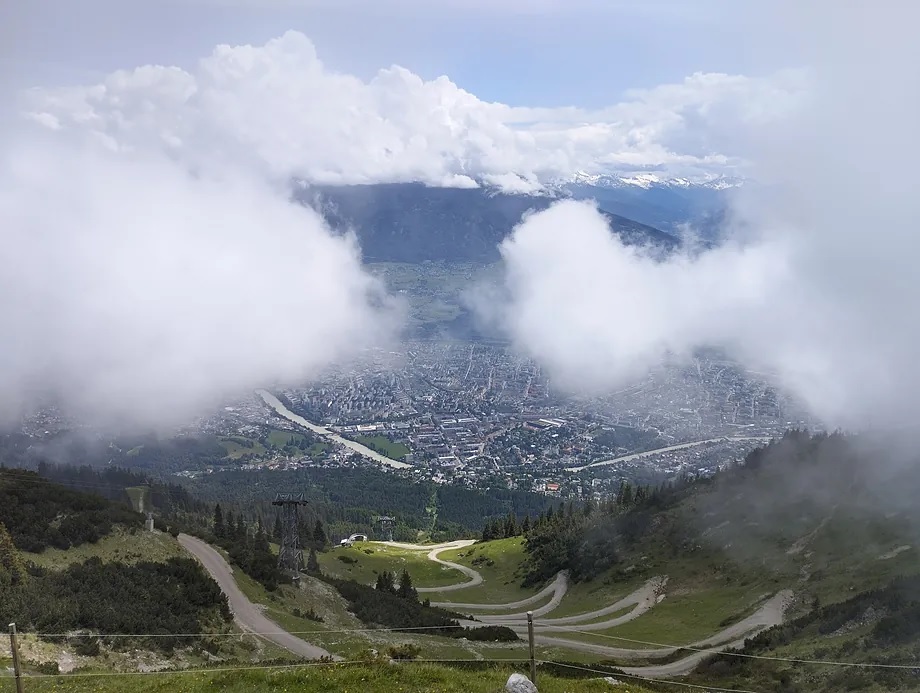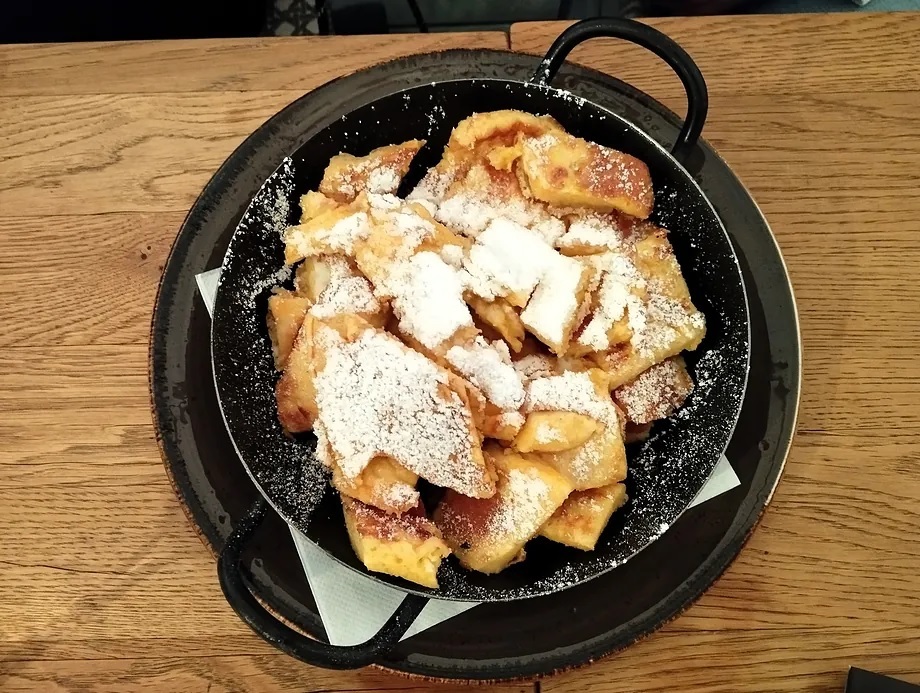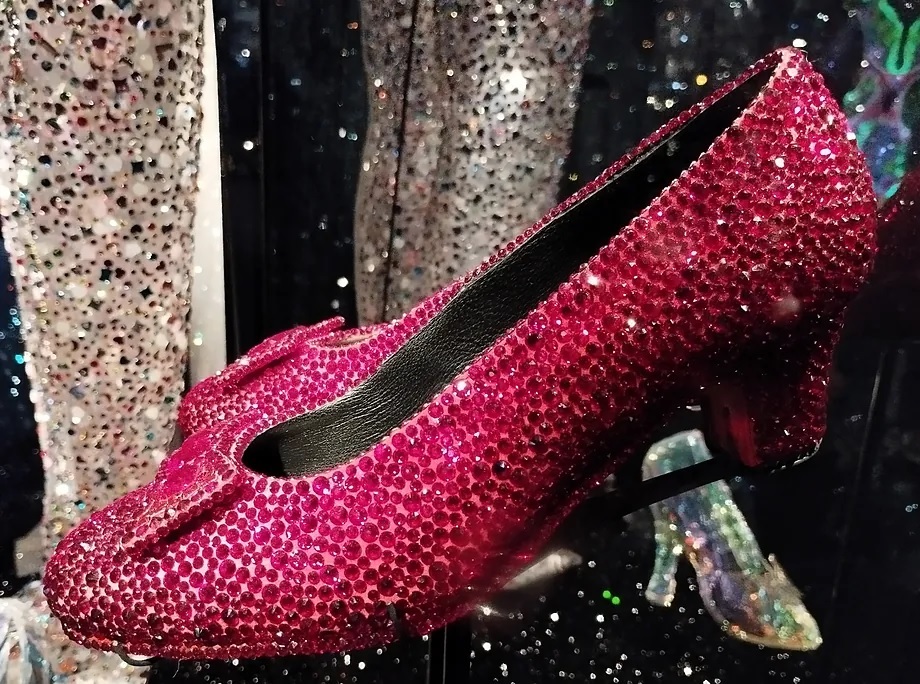Surely, if we could, we would all have a pool at our doorstep. Or a zip line to go from the bedroom to the kitchen. Maybe a ball pit at the end of the workday. We are not foolish. It's okay to wish for what entertains you the most to be as close as possible. Well, that's a reality for the residents (and visitors) of Innsbruck, a lively medium-sized city, the third tourist destination in Austria: within just 20 minutes, they have 13 ski resorts around. And what this means for those who are not enthusiastic about winter sports: majestic mountains offering a spectacular landscape just by looking up while having a coffee in a central square, hiking trails, and alpine excursions just 15 minutes from the old town. Something that anyone would consider a luxury.
Its medium size makes it best to explore Innsbruck on foot, although it has trams and urban buses that connect every corner well.
As soon as we step into the city center, our steps, or those of others, inevitably lead us to the Golden Roof, the symbolic point of the historic center, in a building erected between the Gothic and the Renaissance, which still contains about three kilograms of precious metal in the tiles of its roof. Below it, you shouldn't miss the "culos de Innsbruck," a joke by local artisans who left several figures showing their buttocks as if mocking passersby. Not far away (it must be emphasized, nothing is really far), a visit to the baroque St. James's Cathedral, destroyed in World War II, is worth it, housing a tender portrait of the Virgin with a complicit look at the Child, by Lucas Cranach, reproduced in a thousand corners of the city. Also worth a visit is the Tyrolean Folk Museum, with a cloister inside and the imposing bronze statues surrounding the tomb of Emperor Maximilian, such as those representing Philip the Handsome and Joanna I, the Mad.
In general, the charm of urban Innsbruck lies in its well-maintained historic buildings, tastefully decorated shops, and pastel-colored houses overlooking the Inn River, with its murky and choppy waters.
After getting acquainted with the city, the next goal should be the mountain. Regardless of the visitor's profile, whether sporty, sedentary, gourmet, or contemplative, it is essential to go up to Nordkette. But don't panic. To go from the city's 500 meters above sea level to 2,332 meters, there is a funicular with a cable car that connects from the central streets in fifteen minutes. This transport even offers the possibility to order a picnic and pick it up at the penultimate station, where a restaurant awaits.
Once at the summit, even before satisfying hunger, one absorbs every last glimmer of sunlight on the snow, the color contrast with the black rock of the peaks, and the green of the alpine forests. At the feet, a dizzying ravine ends in the valley, with the city nestled between this mountain range and the next. Behind, the mountains that mark the border with Germany. A 360-degree view that leaves you speechless. It seems impossible that just 15 minutes ago we were amidst traffic and shops. Now everything is calm and grandiose. Here, you can recharge your batteries with the cold cuts and cheeses from the picnic or take one of the trekking routes and the geotrail, a path with five stations showing remains of coral reefs. Because, as unbelievable as it may seem to our eyes, these peaks were once part of the seabed that covered what is now Austria.
Directly across from this mountain range is the ski jump, with its iconic twisted tower designed by Zaha Hadid. Don't miss visiting this famous ski jump (its most famous jumps are on January 3, not to be confused with those on January 1 from Garmisch, Germany, very close to the Austrian border) just because you're not traveling in winter. Even without snow, there are exhibition jumps and even competitions thanks to its green artificial grass carpet. This is recounted by Martin Nagiller, 40 years old, former professional, who receives applause and congratulations from those who have seen him launch himself at over 90 km/h on the ski jump and slide down to the braking ramp at the end of the track. Beyond the void, the city. It's a macabre coincidence that the first thing the jumpers see of Innsbruck from the board where they wait their turn is... the cemetery, but that's how it is.
The perfect triangle of nature and outdoor activities that started with Nordkette and passed through the ski jump would be completed with a trip to Mieminger Plateau, a plateau half an hour away by car or bus from the city where it's easy to imagine Heidi settling down with Peter after a few years, taking care of their cows, sheep, and pastures to sell cheese to tourists while enjoying watching the wheat sway in the wind at the foot of the mountains. That's Mieminger Plateau, a plain where you can spend the day strolling from village to village (just a few kilometers apart), cycling around, and tasting the local products sold by farmers and herders in open shops from 7:00 to 9:00, where no one attends the business: the customer serves themselves, pays by card, or even writes down their purchase in a notebook and collects the change.
Back in the city, it's a good time to recharge and explore the varied gastronomic offer of Tyrol. To get a general idea, it's a good option to join one of the local food tours, starting at the Markthalle (open only from 7:00 to 12:00), where producers sell their cheeses, fruits, and liqueurs directly. From there, other small traditional shops, such as the Tiroler Speckeria, with its smoked hams and other cold cuts; the historic Kröll bakery, or the sweets from Munding Konditorei, a classic confectionery open since 1803 with its coffee machine in service since 1961. From the entrance to this establishment, you can enjoy one of the best views of the Alps.
Moving on to the main course, typical Tyrolean dishes include Tiroler Gröstl (with beef, egg, and potatoes) and Kasspatzln (pasta with cheese and baked onions). It's hard to end the day hungry. Also thirsty. Because, contrary to stereotypes, Tyrol goes beyond beer. Teetotalers have mountain water, which the locals of Innsbruck boast about more than Madrid residents do about their Canal de Isabel II. Or the slightly carbonated blueberry soda, with a mild and not too sweet taste. Those who switch to alcoholic beverages can opt for a wine tasting at the Weinhaus Tyrol, with tastings of Tyrolean, Austrian, and international references. Or go straight to the cocktails at Maria Theresia, a recently renovated classic.
A memory that shines brighter than the mountain snow
Just take a look at the shopping centers or local shops to bring back a souvenir or a sweet treat. Many prefer to take a short trip to the store where the story of the world's most brilliant commerce began: the Swarovski universe. Near Innsbruck (shuttle buses available for 11 euros round trip), you'll find the factory (not open to visitors), the main store, and the museum of this brand, which is filled daily with groups of compulsive shoppers.
Even if one is not captivated by the sparkle of its crystals, a visit to the museum is a worthwhile stop, with updated installations and works by artists like Keith Haring or Salvador Dalí.



